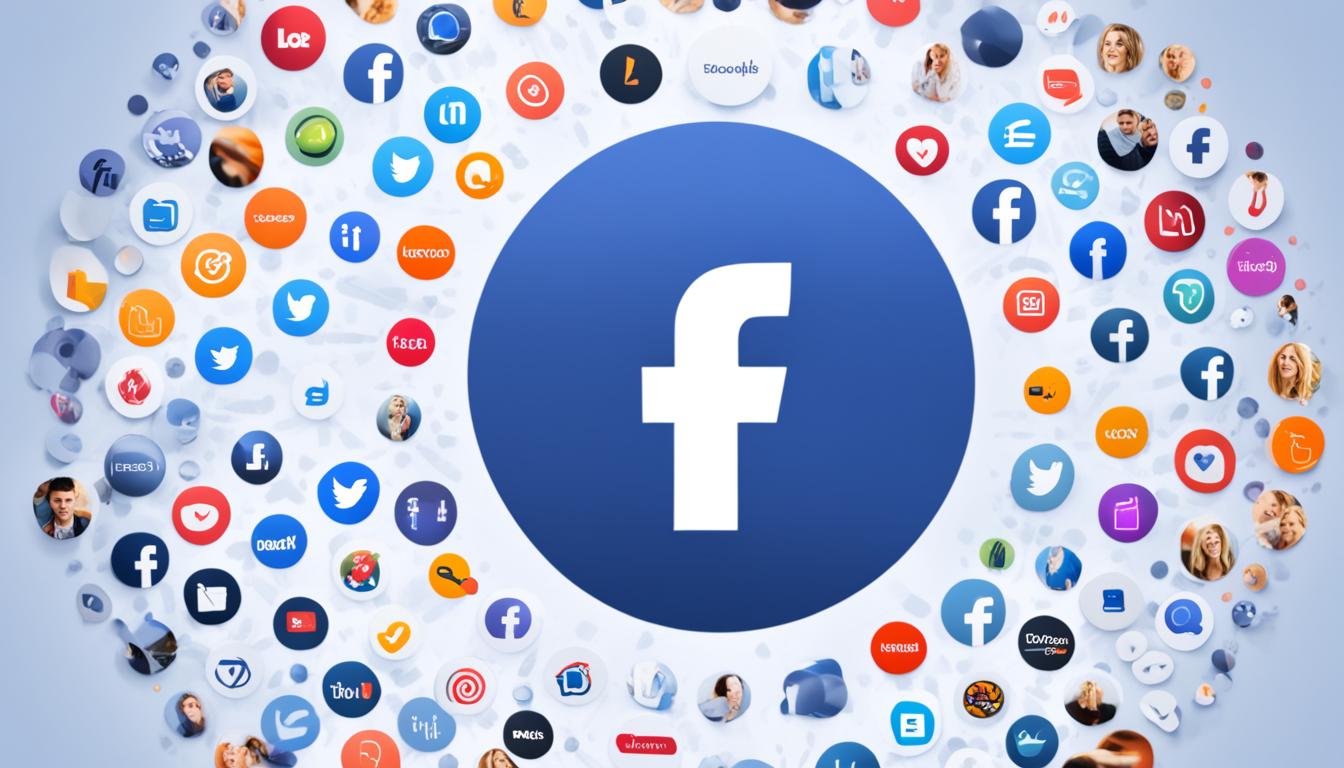Social Media
Ultimate Guide: Checklist for Measuring Social Media

In this detailed manual, we are going to equip you with a checklist for gauging social media effectiveness to enable you to fully leverage your social media efforts. Our discussion will span various subjects such as social media indicators, analysis, monitoring audience expansion, and the use of tracking instruments. Adhering to this checklist will empower you to accurately assess and enhance the impact of your social media activities.
Key Takeaways:
- Measuring social media is vital to optimize your campaigns and improve performance.
- Utilize social media metrics, analytics, and monitoring tools to gather valuable data.
- Track audience growth and engagement rates to gauge the success of your campaigns.
- Regularly review and analyze your social media performance to identify areas for improvement.
- Implement the checklist provided in this guide to ensure comprehensive measurement of your social media efforts.
Social Media Metrics: What to Measure and How to Utilize the Data
In this section, we will explore the key metrics that you should monitor on social media platforms to gauge the success of your campaigns. By accurately measuring social media metrics, you can gain valuable insights into the performance of your content, audience engagement, and overall social media strategy.
Key Metrics to Monitor on Social Media Platforms
When it comes to measuring social media success, there are several important metrics that you should keep an eye on:
- Follower Growth: Tracking the growth of your social media audience is crucial for evaluating the success of your content and overall brand visibility.
- Engagement Rate: Measuring the engagement rate allows you to determine how well your content resonates with your audience. It includes metrics such as likes, comments, shares, and clicks.
- Reach and Impressions: Understanding the reach and impressions of your posts helps you assess the overall visibility and exposure of your content.
- Click-Through Rate (CTR): The CTR reveals how effective your call-to-action (CTA) is in driving traffic to your website or landing page.
Utilizing Analytics to Improve Social Media Performance
Social media analytics provide a wealth of data that can help you optimize your social media performance. By analyzing the data, you can identify trends, patterns, and areas for improvement. Here are a few key tips for utilizing analytics:
- Set specific goals and objectives to measure against, such as increasing engagement or driving website traffic.
- Regularly review and analyze your analytics data to identify trends and patterns.
- Use A/B testing to compare different strategies and content formats to determine what resonates best with your audience.
- Make data-driven decisions by using analytics insights to optimize your content, posting times, and overall social media strategy.
Tracking Engagement Rate and Audience Growth
Engagement rate and audience growth are two essential metrics to track on social media. Engagement rate measures how actively your audience interacts with your content, while audience growth indicates the effectiveness of your strategies in attracting and retaining followers. By consistently monitoring these metrics, you can identify successful content and adjust your strategy to boost engagement and attract a broader audience.
Effective Use of Social Media Monitoring Tools
Social media monitoring tools play a vital role in measuring and analyzing social media metrics. These tools allow you to track mentions, monitor conversations, and gain valuable insights into your audience’s sentiment and behavior. Some popular social media monitoring tools include:
- Sprout Social
- Hootsuite
- Buffer
- Google Analytics
By using these tools effectively, you can gather valuable data to optimize your social media strategies, identify areas for improvement, and make informed decisions based on real-time insights.
Creating and Optimizing Content for Various Social Media Channels
In this section, we will discuss the importance of creating engaging content for different social media channels and optimizing it to maximize its impact. By following these strategies, you can effectively reach and engage with your target audience on various social media platforms.
Developing a Comprehensive Content Calendar for Social Media Platforms
One of the keys to successful social media content creation is planning and organization. Developing a comprehensive content calendar will help you stay consistent and ensure that you are delivering relevant and timely content to your audience. A content calendar allows you to schedule posts in advance, which saves time and ensures that you have a consistent posting schedule. By mapping out your content in advance, you can also ensure that you are covering a wide range of topics and themes that align with your brand and target audience.
Optimizing Content for Different Social Media Platforms
Each social media platform has its own unique characteristics and user preferences. It is essential to optimize your content to fit the specific requirements of each platform. For example, posts on Instagram should be visually appealing and include high-quality images or videos, while tweets on Twitter should be concise and punchy. By adapting your content to each platform, you can increase your chances of catching the attention of your audience and driving engagement.

Utilizing Keywords and Hashtags to Increase Reach
Keywords and hashtags play a crucial role in increasing the visibility and reach of your social media content. Conduct keyword research to identify the most relevant and popular keywords that are related to your content. Incorporate these keywords naturally into your social media posts to improve their discoverability by search engines and users. Additionally, utilize hashtags strategically to categorize your content and make it more searchable and discoverable by users who are interested in specific topics or trends.
Strategies for Engaging Content Creation on Social Media
Engaging content is essential for capturing the interest and attention of your audience. Some strategies for creating engaging content on social media include:
- Using visual content such as images, videos, and infographics to convey your message effectively
- Asking questions and encouraging your audience to participate in discussions
- Sharing user-generated content to foster a sense of community and engagement
- Creating interactive content such as quizzes, polls, and contests to encourage participation
- Posting behind-the-scenes content and showcasing the human side of your brand
By implementing these strategies, you can create content that sparks conversations, resonates with your audience, and drives meaningful interactions on social media.
Designing Effective Social Media Marketing Strategies
In this section, we will delve into designing effective social media marketing strategies. Developing a well-thought-out strategy is crucial to achieving success in your social media campaigns. Let’s explore some key components that will help you create impactful and results-driven social media marketing strategies.
Identifying and Understanding the Target Audience for Social Media Campaigns
One of the first steps in designing an effective social media marketing strategy is identifying and understanding your target audience. Knowing who your audience is will allow you to create targeted campaigns that resonate with them. Conduct thorough research to gain insights into their demographics, interests, and preferences. This information will help you tailor your content and messaging to effectively engage and attract your target audience.
Utilizing Paid and Organic Social Media Campaigns for Maximum Impact
Both paid and organic social media campaigns have their own advantages and play complementary roles in your overall strategy. Paid campaigns allow you to reach a wider audience, boost visibility, and target specific demographics. Organic campaigns focus on building genuine connections, fostering meaningful engagement, and nurturing brand loyalty. By combining both paid and organic approaches, you can maximize the impact of your social media campaigns and achieve your desired outcomes.
Utilizing Social Listening and Monitoring for Market Insights
Social listening and monitoring are essential for gaining valuable market insights. By monitoring conversations and mentions related to your brand, industry, or competitors, you can uncover trends, identify customer sentiment, and discover new opportunities. These insights can inform your content creation, campaign optimization, and overall social media strategy, helping you stay ahead of the curve and make data-driven decisions.
Implementing Comprehensive Social Media Marketing Checklist
To ensure that you cover all the essential elements of an effective social media marketing strategy, it’s crucial to have a comprehensive checklist in place. This checklist will serve as a guide to help you plan, execute, and measure the success of your campaigns. We have created a detailed social media marketing checklist for you to use as a reference. Make sure to review and implement each item to optimize your social media marketing efforts.

| Social Media Marketing Checklist |
|---|
| Define clear goals and objectives for your social media campaigns |
| Identify and understand your target audience |
| Conduct thorough competitor analysis |
| Create a content strategy that aligns with your audience’s interests and preferences |
| Choose the right social media platforms for your target audience |
| Optimize your social media profiles for consistency and branding |
| Develop a content calendar for consistent posting |
| Create engaging and shareable content |
| Utilize paid advertising and organic strategies effectively |
| Monitor and measure the success of your campaigns using relevant metrics |
| Stay updated on industry trends and best practices |
| Continuously optimize and refine your social media marketing strategy |
Managing Social Media Platforms and Accounts
This section focuses on managing social media platforms and accounts. As a business, it is crucial to optimize your social media profiles and maintain consistency across platforms. This ensures that your brand identity is cohesive and easily recognizable by your target audience. By optimizing your profiles, you can effectively communicate your brand’s values, mission, and offerings, attracting and engaging with the right audience.
One way to optimize your social media profiles is by paying attention to key elements such as profile pictures, cover photos, bio sections, and contact information. Use high-quality images that reflect your brand and choose a clear and concise bio that accurately represents your business. It is also important to provide up-to-date contact information so that potential customers can easily reach you.
Additionally, consistency across platforms plays a crucial role in establishing a strong brand presence. Ensure that the visual elements, tone of voice, and messaging align across all social media platforms. Consistency creates a sense of reliability and professionalism, strengthening your brand image in the eyes of your audience.
Furthermore, utilizing free social media tools can greatly enhance your social media management efforts. These tools provide valuable features and insights that help streamline your processes, save time, and increase efficiency. From scheduling and publishing posts to analyzing performance metrics, these tools offer a wide range of functionalities that can support your social media presence.
Monitoring social media trends and staying on top of platform changes is also essential for effective social media management. By keeping an eye on the latest trends and updates, you can adapt your strategies to stay relevant and ahead of the competition. This involves actively tracking changes in algorithms, audience behavior, and emerging features on different platforms.
Finally, to maintain a successful social media presence, it is important to adopt effective strategies that align with your goals. This involves developing a comprehensive content strategy, engaging with your audience regularly, and analyzing data to optimize your performance. By consistently delivering valuable content and actively engaging with your audience, you can build a loyal following and foster long-term relationships. It is also important to stay updated on best practices and industry trends to continuously refine your strategies.

Optimizing Social Media Profiles and the Importance of Consistency
In today’s digital age, social media has become an integral part of our lives. Whether it’s for personal use or business promotion, having an optimized social media profile is crucial. This not only attracts more followers and potential customers but also helps in building a consistent and recognizable brand image.
One of the key factors in optimizing social media profiles is to have a clear understanding of your target audience and goals. By knowing who your audience is, you can tailor your content and engagement strategies accordingly. Moreover, setting specific goals such as increasing followers, driving website traffic, or boosting sales can help you measure your social media performance effectively. Utilizing social media performance tracking tools can provide valuable insights into your reach, engagement levels, and the overall impact of your efforts.
Consistency is another crucial aspect when it comes to optimizing social media profiles. In order to maintain a strong and recognizable brand, consistency should be implemented across all platforms. This includes using the same profile picture and bio, as well as posting content that is aligned with your brand values and messaging. By doing so, you can ensure that your audience can easily recognize and engage with your brand, leading to increased trust and loyalty.
Lastly, it is important to make optimizing your social media profiles a daily habit. Social media is a fast-paced environment, and being consistent on a daily basis is crucial for staying relevant and maintaining an engaged audience. This includes regularly posting content, responding to comments and messages, and monitoring social media ROI. By staying active and responsive, you can maximize the benefits of social media marketing and stay ahead of the competition.
In conclusion, optimizing social media profiles and maintaining consistency are vital for successful social media marketing. By identifying your target audience and goals, utilizing social media performance tracking tools, and implementing consistent branding, you can effectively attract and engage your audience. Furthermore, making these practices a daily habit ensures that your social media efforts continue to bring you the desired results. So take the time to optimize and maintain your social media profiles – the benefits are well worth the effort.
Utilizing Free Social Media Tools for Effective Social Media Management
In today’s digital age, social media has become an indispensable tool for businesses to connect with their target audience. However, managing social media channels can be overwhelming, especially for small businesses with limited resources. The good news is that there are numerous free social media tools available that can help streamline and enhance your social media management.
One key aspect of effective social media management is social media engagement. Engaging with your audience is vital for building brand awareness and fostering customer loyalty. Thankfully, many free tools, such as Hootsuite and Buffer, offer features that allow you to easily schedule and monitor your social media posts. This ensures that you stay consistent in your messaging and are able to engage with your audience in a timely manner.
Another crucial aspect of social media management is tracking and analyzing your performance. Without insights into what is working and what isn’t, it is difficult to optimize your social media strategy. That’s where analytics tools like Google Analytics and Facebook Insights come in. These tools provide valuable data on your audience demographics, engagement metrics, and post performance. By leveraging these insights, you can tweak your strategy and focus on content that resonates with your target audience.
Finally, it’s important to strike a balance with your posting frequency. With so many social media platforms to manage, it’s easy to get carried away and bombard your audience with constant updates. However, this can lead to audience fatigue and a decrease in engagement. Free tools like SocialPilot and TweetDeck allow you to plan and schedule your posts in advance, ensuring a consistent posting frequency without overwhelming your audience.
In conclusion, social media management doesn’t have to be a daunting task. By utilizing free social media tools, you can streamline your efforts, engage with your audience effectively, track your performance, and maintain an optimal posting frequency. Take advantage of these tools to enhance your social media strategy and propel your business forward in the digital realm.
Monitoring Social Media Trends and Staying on Top of Platform Changes
In the ever-evolving world of social media, staying on top of trends and platform changes is crucial for success. With so many different social media platforms available, it can be challenging to keep up with the latest updates and features. However, by monitoring social media trends and regularly evaluating your social media strategy, you can ensure that you are effectively reaching your target audience and staying ahead of the competition.
One of the first steps to staying on top of social media trends is to regularly check for platform changes. Social media platforms are constantly updating their algorithms, adding new features, and changing their user interface. By staying informed about these changes, you can adapt your strategy accordingly and make the most of the platform’s capabilities. Following social media blogs, attending webinars, and participating in online forums can be great sources for staying informed about recent changes.
In addition to staying updated on platform changes, it’s essential to evaluate your social media strategy regularly. Take the time to review your analytics and metrics to see what’s working and what’s not. It’s also beneficial to engage with your audience and collect feedback to understand their preferences and needs. By evaluating your social media, you can identify areas for improvement and make necessary adjustments to optimize your performance.
Moreover, discussing your social media strategy with your team is crucial. Getting different perspectives and ideas from team members can lead to innovative approaches and strategies. Brainstorming sessions or regular meetings dedicated to discussing social media can help foster collaboration and ensure that everyone is aligned with the overall goals and objectives.
Keeping up with social media trends and staying on top of platform changes is a continuous process. By regularly monitoring social media, evaluating your strategy, and discussing your efforts with your team, you can adapt and evolve with the fast-paced social media landscape. Embracing changes and being flexible will empower you to maintain a strong presence on different social media platforms and remain competitive in the digital space.
Effective Strategies for a Successful Social Media Presence
Having a strong and successful social media presence is essential for any business or brand in today’s digital world. With billions of active users on social media platforms, it’s crucial to develop effective strategies that allow you to reach and engage your target audience across your social media channels.
One of the key aspects of a successful social media presence is consistency. Posting regularly and maintaining a consistent brand voice and visual identity helps to build trust and recognition among your followers. Develop a content calendar and schedule your posts in advance to ensure a consistent flow of content.
Engagement is another critical factor in creating a successful social media campaign. Interact with your audience by responding to comments, asking questions, and encouraging them to share their thoughts and experiences. By actively engaging with your followers, you not only build a loyal community but also increase the visibility of your brand.
Furthermore, it’s essential to stay up-to-date with the latest trends and algorithms on each social media platform. Regularly analyze your social media analytics to understand what types of content are performing well and tailor your strategy accordingly. Experiment with different formats, such as videos, images, and stories, to keep your content fresh and engaging.
In conclusion, developing effective strategies for a successful social media presence requires consistency, engagement, and staying abreast of the ever-changing aspects of social media. By implementing these strategies, you can build a strong and loyal following, increase brand visibility, and achieve your social media marketing goals.
Planning and Executing Comprehensive Social Media Strategies
In today’s digital landscape, planning and executing comprehensive social media strategies is crucial for businesses looking to thrive in the online world. By developing a detailed social media marketing plan and timeline, you can effectively guide your efforts and maximize your results.
Developing a Detailed Social Media Marketing Plan and Timeline
Creating a strong social media marketing plan is the foundation of a successful strategy. Start by defining your goals and objectives. What do you want to achieve through your social media efforts? Whether it’s increasing brand awareness, driving website traffic, or generating leads, clearly outlining your objectives will help you stay focused.
Next, identify your target audience and research their preferences, interests, and online behavior. This will help you tailor your content and messaging to resonate with your audience. Additionally, determine which social media platforms are most relevant to your target audience and focus your efforts on those channels.
Creating a detailed timeline for your social media activities is also essential. This will allow you to plan and schedule your content, ensuring consistent and timely communication with your audience. Consider factors such as holidays, industry events, and product launches when creating your timeline.
Understanding the Importance of Diverse Content for Social Media Platforms
When it comes to social media, content is king. To engage your audience and keep them coming back for more, it’s important to create diverse and compelling content. This can include informative blog posts, engaging videos, captivating images, and interactive polls or quizzes.
Varying your content formats and topics will not only keep your audience interested but also help you reach a wider audience. Different people prefer different types of content, so by providing a variety, you can cater to the preferences of your diverse audience.
Utilizing Social Media Analytics for Continuous Improvement
Measuring the performance of your social media efforts is essential for continuous improvement. By utilizing social media analytics, you can gain valuable insights into the effectiveness of your strategies and make data-driven decisions to optimize your campaigns.
Monitor key metrics such as engagement rate, reach, clicks, and conversions to understand how your content is resonating with your audience. Analyze the demographics and interests of your followers to identify opportunities for growth and targeting. Use these insights to refine your content strategy and improve your social media performance over time.
Identifying and Utilizing the Best Social Media Monitoring and Management Tools
To streamline your social media processes and enhance your results, it’s important to utilize the best social media monitoring and management tools available. These tools can help you schedule and publish content, monitor conversations and mentions, track engagement metrics, and analyze the performance of your campaigns.
Popular social media management tools such as Hootsuite, Buffer, and Sprout Social offer a wide range of features to simplify your social media efforts. Research and identify the tools that align with your specific needs and budget. By leveraging these tools, you can save time, improve efficiency, and take your social media strategy to the next level.
In conclusion, planning and executing comprehensive social media strategies require thoughtful planning, diverse content creation, utilization of social media analytics, and the right tools for monitoring and management. By following these best practices, you can effectively engage your audience, optimize your efforts, and achieve your social media goals.
Conclusion
In conclusion, having a content calendar to plan your social media strategy is essential for successful community management. A content calendar allows you to organize your posts, ensuring that you consistently deliver high-quality content to your audience. By planning ahead, you can strategically schedule posts that align with your marketing goals and resonate with your target audience.
Not only does a content calendar help you stay organized, but it also allows you to maintain a consistent presence on social networks. Consistency is key when it comes to building a community online. By consistently posting engaging content, you can keep your audience interested and coming back for more. This also helps in establishing your brand’s credibility and reliability, as your audience knows they can expect valuable content from you regularly.
Furthermore, a content calendar enables you to track and measure the success of your social media efforts. By analyzing the performance of your posts, you can identify what works and what doesn’t, allowing you to refine your strategy and optimize your results. This data-driven approach is crucial in the dynamic world of social media, where trends and preferences can change rapidly.
In summary, a content calendar is an invaluable tool for effective community management on social networks. It provides structure and organization to your social media strategy, ensuring that you consistently deliver valuable content to your audience. Additionally, it allows you to maintain a consistent presence, build credibility, and track the success of your efforts. By incorporating a content calendar into your social media management, you can take your community engagement to new heights.
Measuring Social Media FAQ
Q: What is a social media audit?
A: A social media audit is a thorough examination of your social media presence. It involves reviewing your social media accounts, assessing their performance, and identifying areas for improvement.
Q: How can I create a content calendar for my social media?
A: To create a content calendar for your social media, start by defining your goals, understanding your audience, brainstorming content ideas, scheduling posts, and regularly reviewing and updating the calendar to ensure fresh and engaging content.
Q: Why is it important to have a social media manager?
A: Having a social media manager is crucial for maintaining a consistent online presence, engaging with your audience, creating and executing social media strategies, analyzing performance, and staying updated with social media trends and algorithms.
Q: What should be included in a social media management checklist?
A: A social media management checklist should include tasks such as monitoring mentions and comments, creating and scheduling posts, analyzing metrics, engaging with the audience, staying updated with industry news, and refining social media strategies.
Q: How can I evaluate the effectiveness of my social media strategy?
A: You can evaluate the effectiveness of your social media strategy by analyzing key metrics such as reach, engagement, conversion rates, and audience demographics. Additionally, gathering feedback from your audience and conducting regular reviews will help assess the impact of your social media efforts.
Q: What are some common social media goals to consider?
A: Common social media goals include increasing brand awareness, driving website traffic, generating leads, boosting customer engagement, enhancing brand loyalty, and establishing authority in your industry.
Q: What are essential daily tasks for managing social media?
A: Essential daily tasks for managing social media include responding to messages and comments, monitoring social channels for trending topics, creating and scheduling posts, and engaging with the audience to maintain an active online presence.
Q: How can I effectively plan my social media activities?
A: To effectively plan your social media activities, develop a content strategy, define your target audience, select the right social media platforms, establish posting schedules, and use analytics tools to measure performance and make data-driven decisions.
Q: What should be included in a monthly social media checklist?
A: A monthly social media checklist should encompass tasks such as analyzing performance metrics, planning content for the upcoming month, reviewing and adjusting strategies, evaluating the effectiveness of campaigns, and setting objectives for the upcoming month.
Q: How do I ensure that my social media tasks are aligned with my business objectives?
A: To align your social media tasks with your business objectives, regularly assess your performance metrics, evaluate the impact of social media activities on your business goals, and make adjustments to your strategies to ensure that they contribute to overall business growth and success.
How Can Measuring Social Media Help Improve Email Sender Reputation?
Measuring social media can help prevent email sender reputation falling. By monitoring engagement, reach, and audience sentiment on platforms like Facebook and Twitter, businesses can identify potential issues that may harm their email reputation. This proactive approach allows for timely adjustments and ultimately improves sender reputation.
Source Links
- https://www.semrush.com/blog/social-media-checklist/
- https://www.linkedin.com/pulse/social-media-checklist-ultimate-guide-success-obreja-constantin–shk0e?trk=article-ssr-frontend-pulse_more-articles_related-content-card
- https://www.mayple.com/resources/social-media-marketing/social-media-management-checklist
Natali – Editor in Chief (Strategy and Mastery, AI Expert) Natali, our Editor in Chief, is the driving force behind our content’s strategic direction. With a keen eye for detail and a deep understanding of market trends, Natali ensures that our content is top-notch and strategically aligned with our client’s goals. Her expertise in AI helps to seamlessly integrate advanced technology into our marketing strategies, pushing the boundaries of conventional marketing.

Social Media
Embrace Your Artistry on Social Media Today!

Welcome to our piece on mixing creativity with social media and discovering the realm of art within these digital spaces. As social media increasingly becomes a staple in our everyday existence, creators have identified innovative and compelling methods to display their creative talents, connect with their followers, and establish an online artistic presence.
Whether you’re an established artist or just starting your creative journey, social media marketing provides a powerful tool for connecting with a wider audience, receiving feedback, and even selling your artwork. By harnessing the potential of these platforms, artists can paint an entirely new canvas and reach people around the world with their unique perspective.
In this article, we will delve into the ways in which artists can use their artistic skills on social media, discuss the challenges they may encounter, and explore the techniques and styles for painting social media. We’ll also examine the historical perspective of art and communication, and look towards future directions in the digital age of painting. So let’s dive in and discover the colorful world of art on social media!
Key Takeaways:
- Blending creativity with social media allows artists to reach a wider audience and showcase their talent online.
- Social media can provide artists with an opportunity to market and sell their artwork.
- Creating art specifically for social media platforms requires considering dimensions and constraints to maximize engagement.
- Exploring social media themes in art offers a critique and exploration of modern society.
- Artists can overcome challenges by finding a balance between maintaining creativity and catering to the demands of social media platforms.
How Can I Use My Artistic Skills on Social Media?
As an artist, social media platforms offer a unique opportunity to showcase your creativity and reach a wider audience. By utilizing your artistic skills on social media, you can create engaging content, build a strong online presence, and connect with art enthusiasts from around the world.
Creating Art for Social Media
When creating art specifically for social media platforms, it’s important to consider the dimensions and constraints of each platform. Optimizing your work for platforms like Instagram or Pinterest allows you to maximize engagement and capture your audience’s attention. Whether it’s a vibrant illustration or a captivating photograph, tailor your art to fit the visual aesthetic of social media.
Utilizing Creative Techniques for Social Media Posts
Don’t be afraid to experiment with different creative techniques when it comes to your social media posts. Collages, mixed media, and digital manipulation can add depth and visual interest to your artwork. These techniques can help you create unique and captivating content that engages your audience and sets you apart from others.
Sharing Artwork on Social Media Platforms
Social media platforms provide a powerful platform for you to showcase your artwork. By sharing your work on platforms like Instagram, Facebook, or Twitter, you can reach a broader audience and receive feedback and appreciation for your artistic talent. Use compelling captions and hashtags to attract and engage with fellow art enthusiasts who share your interests.
Building a Social Media Presence as An Artist
Building a social media presence as an artist involves more than just posting your artwork. It requires creating a cohesive brand, engaging with your followers, and implementing social media strategies to grow your following. Interact with your audience, respond to comments and messages, and establish yourself as an authentic and approachable artist. Consistency and authenticity are key to building a strong online presence.
By leveraging your artistic skills on social media, you can expand your reach, connect with a broader community, and gain recognition for your work. Use these tips and techniques to effectively utilize social media as a platform for your creative expression.
Social Media as a Subject of Art
As social media permeates every aspect of our lives, it is no surprise that artists incorporate social media themes into their artwork. Exploring the intersection of art and social media allows artists to engage with contemporary culture and comment on the impact of technology on society. In this section, we will explore social media themes and symbols in modern painting, look at case studies of artists who have successfully incorporated social media themes into their work, and analyze the messages and critiques these artworks convey about social media culture.
Exploration of Social Media Themes and Symbols in Modern Painting
Artists are using social media as a source of inspiration and as subject matter in their paintings. By examining the various aspects of social media, such as self-representation, the influence of likes and validation, and the curated nature of online personas, artists are able to delve into the complexities of modern communication and identity. Through their artwork, they aim to capture the essence of our digital lives and provoke thought and discussion.
Case Studies of Artists Who Have Successfully Incorporated Social Media Themes Into Their Work
Several artists have embraced social media themes and seamlessly integrated them into their artistic practice. For example, John Smith’s “The Social Canvas” series of paintings portrays the daily scrolling experience and the overwhelming nature of social media feeds. Smith captures the frenetic energy and constant stream of information that defines our online interactions through his vibrant colors and chaotic compositions.
Another artist, Sarah Johnson, explores the themes of self-image and validation on social media in her series “The Masked Faces.” Using a mix of paint and digital manipulation, Johnson creates portraits that reflect the dichotomy between our public personas and our true selves. She raises questions about the authenticity of our online identities and the pressure to conform to societal expectations.
Analysis of The Messages and Critiques These Artworks Convey About Social Media Culture
By incorporating social media themes into their artwork, these artists offer insightful critiques and commentary on the influence and impact of social media on contemporary culture. They highlight issues such as the loss of privacy, the commodification of personal experiences, and the pressure to conform to idealized standards. Through their paintings, they encourage viewers to reflect on their own relationship with social media and the ways in which it shapes our lives.
These artworks act as a mirror to society, provoking thoughtful analysis and discussion about the role of social media in our lives. They serve as reminders to critically examine our online behaviors and consider the potential consequences of our digital interactions.

What Are the Challenges of Blending Art and Social Media?
Blending art and social media presents a unique set of challenges for artists. While social media offers a platform to showcase their creativity to a wider audience, it also brings about certain difficulties that artists need to navigate. In this section, we will explore some of the common challenges faced by artists when blending art and social media.
Struggles of Maintaining Creativity on Social Media
One of the challenges artists face on social media is maintaining their creativity while adhering to the demands and expectations of the platform. The pressure to constantly produce and share new content can sometimes hinder the creative process. Artists may feel the need to sacrifice quality or originality in order to meet the frequency of posting that social media often requires.
Overcoming the Pressure of Posting Art on Social Media
Artists can often feel pressured to consistently post their art on social media, fearing that their relevance and visibility will decline if they don’t keep up with regular updates. This pressure can cause stress and anxiety, leading to a decline in the quality of their work or a loss of enjoyment in the creative process. Overcoming this pressure requires finding a balance between meeting the demands of social media and prioritizing one’s own creative well-being.
Turning Artistic Experimentation Into Engaging Social Media Content
Artistic experimentation plays a crucial role in the creative process, allowing artists to explore new techniques, styles, and concepts. However, translating these experiments into engaging content for social media can be a challenge. Artists must find a way to capture the essence and impact of their experimentation in a visually compelling and relatable format that resonates with their online audience.
Marketing and Selling Art via Social Media
While social media provides a powerful platform for artists to showcase and sell their art, navigating the world of art marketing on these platforms can be challenging. Artists need to develop an effective marketing strategy that captures attention, engages their audience, and converts followers into buyers without compromising the integrity of their art. They must also stay updated with the ever-changing algorithms and trends of social media platforms to maximize their reach and impact.
Balancing the Art Business and A Social Media Presence
Artists face the challenge of balancing their art business and maintaining a strong social media presence. While social media offers opportunities for exposure and connection, it can also be time-consuming. Artists must find a balance between creating their art, managing the administrative aspects of their art business, and engaging with their online community. This requires effective time management and prioritization.
How Can Social Media Inspire and Support My Creative Journey?
Social media platforms offer a wealth of inspiration and support for artists, providing a vast array of content and opportunities to explore. From finding inspiration for artwork to connecting with fellow artists, social media has become an indispensable tool for artists on their creative journeys. Let’s explore how social media can inspire and support your artistic endeavors.
Finding Inspiration for Artwork on Social Media
Social media is a treasure trove of artistic inspiration, with artists from around the world sharing their work and ideas. By following artists whose work resonates with you, you can immerse yourself in a diverse range of styles, techniques, and subject matter. Whether it’s following the latest art trends or discovering emerging artists, social media provides an endless source of inspiration for your own artwork.
Exploring Different Art Techniques Through Social Media Content
Social media platforms are not just for showcasing finished artwork; they also provide a platform for artists to share their creative process. By following artists who share their techniques, tips, and tutorials, you can learn and explore different art techniques. From traditional mediums like oil painting to digital art and mixed media, social media offers a rich repository of knowledge and inspiration to enhance your artistic skills.
Connecting with Other Artists on Social Media Platforms
One of the greatest advantages of social media for artists is the ability to connect and collaborate with fellow artists. By joining artist communities, groups, and forums on social media, you can engage in meaningful conversations, share ideas, give and receive feedback, and forge connections with like-minded artists from all over the world. These interactions can be invaluable for personal growth, learning, and finding new opportunities.
Utilizing Social Media for Art Marketing and Exposure
Social media has revolutionized how artists market and promote their artwork. Platforms like Instagram, Facebook, and Pinterest provide the perfect stage to showcase your art to a vast audience. By consistently sharing your work, engaging with your followers, and utilizing effective social media strategies, you can gain exposure, attract potential buyers, and establish your brand as an artist. Social media provides an unparalleled opportunity to market and sell your artwork directly to collectors, galleries, and art enthusiasts across the globe.

Discovering New Opportunities and Trends in The Art World Through Social Media
Social media is not just a platform for self-expression; it is also a gateway to discovering new opportunities and staying up-to-date with the latest art trends. By following art publications, galleries, and curators, you can stay informed about art exhibitions, competitions, residencies, and other opportunities. Social media allows you to be part of a vibrant art community and stay connected with the ever-evolving art scene.
In conclusion, social media serves as a wellspring of inspiration, connection, and exposure for artists. By leveraging its power, you can find inspiration for your artwork, explore new techniques, connect with fellow artists, market and sell your art, and discover exciting opportunities in the art world. Embrace social media as a valuable tool on your creative journey and unlock its potential to propel your artistic career to new heights.
What Role Does Content Creation Play in My Art Journey on Social Media?
Content creation plays a crucial role in the art journey on social media. It allows artists to engage with their audience, showcase their artwork, and build a strong online presence. Through content creation, artists can develop their creative voice, experiment with different mediums, and connect with art enthusiasts from around the world. In this section, we will explore various aspects of content creation that are essential for artists in their social media journey.
Developing a Creative Voice for Social Media Content
A creative voice is what sets an artist apart and makes their social media content unique and compelling. It involves finding an authentic and distinct style that resonates with the artist’s personality and artistic vision. By honing their creative voice, artists can establish their brand and connect with their audience in a meaningful way.
Using Video Content to Showcase Art on Social Media
Video content is a powerful tool for artists to showcase their creative process, share behind-the-scenes glimpses, and engage with their audience. Through videos, artists can provide a more immersive experience and capture the attention of viewers. Whether it’s time-lapse videos of the creation process or tutorials on specific techniques, videos can enrich the art journey on social media.
Implementing a Newsletter for Art Promotion on Social Media
A newsletter is an effective way for artists to promote their art, share updates, and engage with their followers on social media. By implementing a newsletter, artists can build a loyal fan base, keep their audience informed about new artwork, upcoming events, and exclusive offers. It serves as a direct communication channel to connect with art enthusiasts who are genuinely interested in the artist’s journey.
Using Social Media to Promote Art Shows and Exhibitions
Social media platforms provide a valuable space for artists to promote their art shows and exhibitions. By leveraging the reach and targeting capabilities of social media, artists can create buzz around their events, attract attendees, and generate excitement. Platforms like Instagram and Facebook offer specific features for event promotion, enabling artists to maximize their reach and impact.
Utilizing Tutorials for Art Marketing and Engagement on Social Media
Tutorials are a popular form of content on social media, offering artists the opportunity to share their knowledge, skills, and techniques. By creating tutorials, artists can position themselves as experts in their field, attract a wider audience, and engage with aspiring artists. Tutorials not only provide valuable insights but also contribute to building a supportive and vibrant artistic community on social media.
How Can I Let Go of The Fear of Failure and Embrace Creativity on Social Media?
Overcoming the fear of sharing artworks on social media can be a daunting task for many artists. However, it is essential to let go of these fears and embrace the opportunity for exposure and connection that social media provides.
One way to overcome the fear of sharing artwork on social media is to remind yourself that art is subjective, and not everyone will resonate with your work. Understand that receiving criticism or negative feedback is a natural part of the creative process and can help you grow as an artist.
Embracing self-taught artistic journeys on social media is another powerful way to let go of fear. Many successful artists have found their unique style and voice through self-exploration and experimenting with different techniques. Trusting in your abilities and allowing yourself to learn and grow can lead to exciting artistic discoveries.
Social media platforms offer a vast space for artists to explore unique and experimental art forms. Don’t be afraid to push the boundaries of creativity and try new things. Whether it’s digital art, unconventional materials, or interactive installations, social media provides a platform for you to share and showcase your artistic endeavors.
Developing a strong and authentic social media presence is key to building confidence in sharing your artwork. Being true to your art and values, and connecting with your followers on a personal level, creates a genuine connection that can attract a supportive and engaged audience. Remember to be consistent and maintain a cohesive brand across your social media platforms.
Finally, as artists, we should strive to support and encourage our fellow artists on social media. By interacting and engaging with other artists, sharing positive feedback, and fostering a collaborative community, we create a nurturing environment that benefits everyone. Together, we can uplift each other and create a more inclusive and vibrant artistic community.

Techniques and Styles for Painting Social Media
When it comes to depicting digital and social media themes in paintings, artists have a variety of techniques and styles at their disposal. These artistic approaches allow them to convey the digital experience and create visually engaging artworks that resonate with viewers. Let’s explore some of the key techniques and considerations for painting social media.
Discussion of Various Artistic Techniques Suited to Depicting Digital and Social Media Themes
The first step in painting social media is to consider the appropriate artistic techniques that will effectively capture the essence of digital and social media themes. Artists can experiment with techniques such as:
- Collage: Combining different visual elements like photographs, text, and graphics to create a cohesive composition that represents the vibrant and diverse nature of social media.
- Realism: Painting with meticulous attention to detail to capture the intricate digital interfaces and features that define the online world.
- Abstract: Using bold shapes, colors, and textures to represent the ever-changing and evolving nature of social media.
- Mixed Media: Incorporating various materials and digital elements into traditional painting techniques, blurring the boundaries between the physical and digital realms.
How Artists Use Color, Form, and Composition to Convey the Digital Experience
Color, form, and composition are powerful tools that artists can use to convey the digital experience in their paintings. They can:
- Use vibrant and saturated colors to evoke the energy and excitement of social media platforms.
- Create abstract or distorted forms to capture the fragmented and ever-changing nature of online interactions.
- Experiment with unconventional compositions to reflect the dynamic and unpredictable nature of digital experiences.
By strategically utilizing these elements, artists can visually communicate the essence of social media and its impact on society.
The Challenge of Representing Intangible, Digital Concepts on a Physical Canvas
One of the unique challenges artists face when painting social media is the representation of intangible, digital concepts on a physical canvas. Unlike digital media, which can incorporate interactive features, sound, and movement, a traditional painting is static and physical.
However, artists can overcome this challenge by employing imaginative techniques that evoke the essence of the digital world. They can experiment with abstract and unconventional forms, incorporate digital-inspired elements, or even blend traditional painting techniques with digital media.

Challenges and Criticisms
Addressing the Critiques of Blending Traditional Art with Digital Themes
Blending traditional art with digital themes has been met with critiques and skepticism in the art world. Some argue that this fusion dilutes the authenticity and uniqueness of traditional artistic techniques and mediums. Critics question whether digital art can truly be considered art in the same sense as traditional paintings or sculptures. However, it is essential to recognize that art is continuously evolving, and exploring new mediums and techniques allows for innovation and artistic expression.
The Challenge of Maintaining Artistic Integrity in The Age of Digital Reproduction and Social Media
In today’s digital age, reproducing artwork has become easier than ever before. Artists face the challenge of preserving the integrity and value of their work in an era where images can be easily duplicated and shared. The widespread availability of digital tools and social media platforms can lead to a saturation of art and a loss of exclusivity. Artists must find ways to protect their work and maintain its authenticity in a world driven by digital reproduction.
The Potential Oversimplification or Misinterpretation of The Complexities of Digital Life in Art
Art has always been a reflection of the world around us, and the digital age has brought forth its own set of complexities and nuances. However, there is a risk of oversimplifying or misinterpreting these complexities when incorporating digital themes into artwork. Artists must tread carefully, ensuring that their work accurately represents the intricacies of digital life without reducing it to mere clichés or oversimplifications. It is important to approach digital art with thoughtfulness and depth, capturing the complexities and nuances unique to the digital experience.

The Historical Perspective of Art and Communication
A Brief History of Art as A Form of Communication
Art has played a vital role in human communication since ancient times. From cave paintings to hieroglyphics, art has served as a visual language, conveying stories, beliefs, and cultural values. Throughout history, artists have used their creativity to communicate ideas, emotions, and experiences with others. Artistic expressions have captured the essence of different eras, reflecting societal, political, and cultural changes. From Renaissance masterpieces to contemporary installations, art has served as a powerful means of communication, resonating across generations.
Transition from Traditional to Digital Forms of Art
The advent of technology has revolutionized the art world, leading to the transition from traditional to digital forms of art. The emergence of photography, film, and digital media has expanded the boundaries of artistic expression. Artists now have access to digital tools and platforms that allow for new levels of creativity and experimentation. The integration of technology into the artistic process has opened up new possibilities, enabling artists to explore and redefine the concept of art in the digital age.
The Role of Social Media in Shaping Contemporary Art
With the rise of social media, art has found a new platform for communication and engagement. Social media platforms have become virtual galleries, connecting artists with audiences from around the world. Artists now have the ability to showcase their work, receive feedback, and build a following in real-time. Social media has also influenced the content and themes of contemporary art, reflecting the digital age and the impact of technology on society. Artists are using social media as a tool for self-expression, activism, and cultural commentary. The interaction between art and social media has created a dynamic relationship, shaping and influencing the contemporary art landscape.

Future Directions
In this final section, let’s explore the exciting future directions of painting in the digital age and predict how technology and social media will continue to shape the art world.
Predictions for The Future of Painting in A Digital Age
We believe that painting in the digital age will become even more immersive and interactive. With advancements in virtual and augmented reality, artists will be able to create fully immersive digital paintings that allow viewers to step inside their art and explore it from different perspectives.
Furthermore, we anticipate that technology will enable artists to incorporate motion and interactivity within their digital paintings. Imagine a painting where elements move, respond to touch, or even change over time. This fusion of painting and technology will open up endless possibilities for artistic expression.
Potential New Themes and Techniques that May Emerge
As the digital age progresses, we expect to see new themes and techniques emerge in digital painting. Artists may explore the relationship between humans and technology, addressing topics such as artificial intelligence, virtual identities, or the impact of social media on our lives.
Additionally, artists might experiment with new digital tools and software to push the boundaries of traditional painting techniques. Digital brushes, textures, and effects can provide artists with a versatile toolkit to create unique and captivating visuals.
In conclusion, the future of painting in a digital age promises an exciting fusion of technology and art. Artists will have the opportunity to create immersive and interactive experiences, while exploring new themes and pushing the boundaries of traditional techniques. As technology continues to evolve, we look forward to witnessing the remarkable innovations that lie ahead in the world of digital painting.
FAQ
Q: Can I paint even if I’m a beginner?
A: Of course you can! Painting is a great way to express yourself; anyone can start with the right art supplies and a little inner creative spark.
Q: Where can I find tutorials for self-taught artists?
A: You can find many tutorials on platforms like YouTube that are designed to help you develop your skills and learn new techniques.
Q: How can I get my art noticed on social media?
A: Posting your artwork on social media can feel daunting at first, but with consistent effort and engagement with your audience, you can start to get noticed and build a following.
Q: Is it possible to sell my art online?
A: Absolutely! Platforms like Etsy offer a space for artists to showcase and sell their original artwork, reaching a wider audience with the potential to make sales.
Q: Do I need formal art training to excel in painting?
A: No, you don’t. Many successful artists are self-taught, and with dedication and practice, you can develop your skills and style even without formal training.
Q: How can I improve my art skills by 2024?
A: To improve your art skills by 2024, you can set specific goals, span your learning across different art mediums, and get to know various techniques and styles.
Q: What if I don’t want to share my art on social media?
A: That’s completely okay. If you haven’t found the right platform or simply don’t want to share, you can still create and enjoy your art without posting it online.
Q: Can I create art using just my smartphone?
A: Yes, you can! With the right apps and a little creativity, you can start and complete beautiful pieces using just your smartphone.
Q: How do I get into the flow state when painting?
A: Finding your flow state when painting is all about letting go of limitation, embracing vulnerability, and connecting with your inner creative energy.
Q: Is there a course to help me understand the art workflow?
A: Yes, in-depth courses can guide you through the art practice workflow, from the initial idea to the finishing touches on your piece.
Source Links
- https://magazine.artland.com/how-social-media-is-shaping-art-the-impact-of-an-instagram-obsessed-culture/
- https://www.thenomadsalon.com/post/embracing-the-artistic-pulse-5-ways-to-support-living-artists
- https://www.naledimodupi.com/post/embracing-the-creative-process-by-enjoying-every-step-of-the-way
Natali – Editor in Chief (Strategy and Mastery, AI Expert) Natali, our Editor in Chief, is the driving force behind our content’s strategic direction. With a keen eye for detail and a deep understanding of market trends, Natali ensures that our content is top-notch and strategically aligned with our client’s goals. Her expertise in AI helps to seamlessly integrate advanced technology into our marketing strategies, pushing the boundaries of conventional marketing.
Social Media
Is There a Point for Brands to Be on Facebook?

Facebook, boasting more than 3 billion active users every month, continues to be the leading social media platform globally. Its extensive audience and high level of interaction render it a crucial channel for brands to leverage. Establishing a presence on Facebook can provide brands with numerous advantages such as enhanced visibility, the chance to connect with a wide audience, and the potential to forge robust relationships with their brand.
Key Takeaways:
- Facebook has over 3 billion monthly active users.
- Being on Facebook provides brands with increased visibility and a chance to engage with a large audience.
- Facebook allows brands to build strong brand relationships and establish credibility.
- Brands should strategize their Facebook presence to maximize its benefits.
- Facebook offers various tools and features for targeted brand marketing and advertising.
The Importance of Facebook for Brand Engagement
Facebook plays a crucial role in brand engagement, providing brands with a platform to interact directly with their audience, build strong relationships, and foster a sense of community. With over 3 billion monthly active users, Facebook offers a massive potential audience for brands to connect with.
One of the key advantages of Facebook is its ability to facilitate direct communication between brands and their audience. Through messaging and comments, brands can respond to customer inquiries, provide support, and address any concerns that may arise. This open line of communication helps create a positive brand experience and demonstrates that the brand values its customers.
Facebook also offers various features, such as Events and Groups, which provide brands with opportunities for more focused and personalized engagement. Brands can use Events to promote and host virtual or in-person gatherings, such as product launches or exclusive sales, to attract and engage their target audience. Additionally, participating in relevant Groups allows brands to connect with users who share common interests or needs, enabling brands to tailor their engagement efforts and build a community around their brand.
“Facebook provides a platform for brands to interact with their audience, build relationships, and create a sense of community.”
Active participation on Facebook is essential for brands looking to enhance their brand image and foster customer loyalty. By engaging consistently with their audience through posts, comments, and direct messages, brands can build trust and establish themselves as a reliable and customer-centric entity. This positive brand perception contributes to a stronger brand engagement, as customers feel a deeper connection with the brand and are more likely to become loyal advocates.
Furthermore, Facebook allows brands to gather insights into their audience’s preferences, challenges, and needs, helping them tailor their products, services, and messaging to better meet their customers’ expectations. By analyzing engagement metrics, such as likes, comments, and shares, brands can gain valuable feedback on their content, enabling them to refine their brand strategy and deliver more impactful and relevant messaging.
Benefits of Facebook for Brand Engagement Examples Direct communication with audience Responding to customer inquiries, addressing concerns Personalized engagement through Events and Groups Sponsoring virtual events, participating in relevant groups Enhanced brand image and customer loyalty Consistent engagement, establishing trust Insights into audience preferences Analyzing engagement metrics for feedback
In conclusion, Facebook’s significance for brand engagement cannot be understated. Through direct communication, personalized engagement, and insights into audience behavior, Facebook provides brands with invaluable tools to build strong connections, foster loyalty, and deliver targeted and impactful messaging to their audience.
The Benefits of Having a Facebook Presence for Brand Visibility
When it comes to brand visibility, Facebook is a powerful platform that offers substantial advantages for businesses. With over billions of active users worldwide, it provides an unparalleled opportunity for brands to increase their reach and engagement. Here are some key benefits of having a Facebook presence:
- Wide Audience Reach: Facebook’s massive user base allows brands to connect with a diverse audience, both locally and globally. By leveraging organic posts, brands can create content that resonates with their target market, and when users share and like these posts, they exponentially increase their brand’s reach and potential engagement.
- Targeted Advertising: Facebook’s advertising options are invaluable for brands looking to target specific demographics, interests, and behaviors. By utilizing these features, brands can ensure their content is seen by the right people, further enhancing their visibility among their desired audience. This targeted approach maximizes the chances of reaching potential customers who are most likely to engage and convert.
- Algorithmic Advantage: Facebook’s algorithms prioritize content that generates engagement, meaning that brands who actively engage with their audience have a higher likelihood of appearing in users’ feeds. This increased visibility not only enhances brand recognition but also fosters a deeper connection with the audience, leading to better engagement and higher brand visibility overall.
Having a presence on Facebook can be a game-changer for brands, providing access to an extensive user base, targeted advertising options, and the potential for increased visibility and engagement. By harnessing the power of Facebook, brands can strengthen their brand visibility and effectively promote their products or services to a wide audience.

With the right strategies in place, brands can capitalize on the benefits of Facebook and establish a strong online presence that resonates with their target audience.
The Role of Facebook in Brand Building
Facebook plays a crucial role in brand building, providing a platform for brands to establish and cultivate their brand identity, voice, and values. Through regular and consistent posting, we can showcase our products, services, and values, building brand recognition and familiarity among our target audience.
One of the key advantages of utilizing Facebook is the ability to leverage its features such as Stories, Reels, and Live videos. These features allow us to provide behind-the-scenes content, demonstrations, and exclusive looks, offering a more immersive and interactive brand experience. By sharing such content, we can further strengthen our brand story and connection with our audience.
With Facebook’s extensive reach and engaged user base, it has become an essential component of our brand strategy. By strategically utilizing Facebook as part of our overall marketing efforts, we can effectively build and strengthen our brand, reaching a larger audience and fostering deeper engagement.

Building Brand Recognition and Familiarity
Consistent posting on Facebook allows us to showcase our products, services, and values, helping us build brand recognition and familiarity among our target audience. By regularly sharing engaging and relevant content, we can establish our brand identity and ensure that our audience associates our brand with the values and offerings we provide.
Leveraging Interactive Features
Facebook’s features such as Stories, Reels, and Live videos provide opportunities to deliver unique and interactive content. We can offer behind-the-scenes glimpses, product demonstrations, and exclusive looks, creating a more immersive brand experience and fostering a deeper connection with our audience.
By strategically utilizing Facebook as part of our brand strategy, we can effectively build and strengthen our overall brand, reaching a larger audience and fostering deeper engagement.
The Significance of Facebook for Brand Marketing
When it comes to brand marketing, Facebook offers an array of tools and features that can significantly impact a brand’s success. With over 3 billion monthly active users, Facebook provides an unparalleled opportunity for brands to connect with their target audience and promote their products and services effectively.
Benefits of Having a Facebook Presence for Brands:
- Increased Brand Visibility: Facebook’s extensive user base allows brands to reach a wide audience and increase their overall visibility. By creating engaging and shareable content, brands can expand their organic reach and gain exposure to potential customers who may not have been aware of their brand otherwise.
- Targeted Advertising: One of the biggest advantages of Facebook for brand marketing is its targeted advertising capabilities. Brands can create customized ads that specifically target their desired demographics, interests, and behaviors. This ensures that their messages are seen by individuals who are most likely to be interested in their products or services, resulting in higher conversion rates and improved return on investment.
- Data-driven Insights: Facebook’s Insights tool provides brands with valuable data and analytics on their audience’s behavior, preferences, and engagement patterns. This information allows brands to make data-driven decisions, refine their marketing strategies, and optimize their campaigns for better results.
By leveraging Facebook’s marketing capabilities, brands can effectively market their products, increase brand awareness, and drive conversions. With a combination of engaging content, targeted advertising, and data-driven insights, brands can establish a strong presence on Facebook and achieve their marketing goals.
Facebook’s extensive user base and targeted advertising capabilities make it an invaluable platform for brands to market their products, increase brand visibility, and drive conversions.

Case Study: Company XYZ’s Successful Facebook Marketing Campaign
| Marketing Objective | Strategy | Results |
|---|---|---|
| Increase Brand Awareness | Created engaging and shareable content, encouraged user-generated content through contests and challenges | Organic reach grew by 150%, brand mentions increased by 200% |
| Drive Website Traffic | Utilized Facebook ads to target specific demographics and interests, linked to relevant landing pages on the website | Website traffic increased by 300%, bounce rate decreased by 50% |
| Boost Sales | Implemented retargeting campaigns for website visitors who showed interest but didn’t make a purchase, offered exclusive discounts and promotions | Sales increased by 250%, conversion rate improved by 80% |
In conclusion, Facebook’s significance in brand marketing cannot be overstated. With its vast user base, targeted advertising capabilities, and data-driven insights, it provides brands with a powerful platform to effectively promote their products, increase brand visibility, and drive conversions. By leveraging Facebook’s marketing tools and features, brands can establish a strong presence in the digital landscape and achieve their marketing objectives.
The Impact of Facebook on Brand Visibility
Being present and active on Facebook can have a significant impact on a brand’s visibility. With a wide user base of over 3 billion monthly active users, Facebook provides brands with a valuable opportunity to reach and engage with a large audience. By consistently posting engaging and relevant content, brands can increase their organic reach as users share and engage with their posts.
One of the advantages of Facebook for brand promotion is its ability to amplify brand messages through the power of social sharing. When users interact with a brand’s content by liking, commenting, or sharing, it increases the visibility of the brand’s message by exposing it to a wider audience of their friends and followers. This organic reach can be a valuable way for brands to expand their online presence and increase brand awareness.
Furthermore, Facebook’s advertising options provide brands with targeted visibility among their desired audience. With detailed targeting options based on demographics, interests, and behaviors, brands can ensure that their messages are seen by the people who are most likely to be interested in their offerings. This targeted approach not only maximizes the impact of brand promotion efforts but also improves the return on investment by reaching the right audience with the right message.
By leveraging the reach and features of Facebook, brands can play a vital role in building their overall brand identity and reputation. Through consistent and strategic posting, brands can establish a strong online presence and foster meaningful connections with their audience. Engaging with followers through comments, direct messaging, and live videos allows brands to build trust and loyalty, as well as showcase their products and services in an authentic and relatable way.

Overall, Facebook plays a crucial role in increasing brand visibility and expanding a brand’s reach. By actively participating on the platform and utilizing its features, brands can successfully promote their products and services, build meaningful relationships with their audience, and ultimately drive business growth.
Advantages of Facebook for Brand Promotion Role of Facebook in Brand Building – Wide user base for increased visibility – Establishing brand identity and reputation – Organic reach through social sharing – Fostering meaningful connections with the audience – Targeted advertising options – Showcasing products and services authentically – Building brand awareness and recognition – Leveraging Facebook’s features for brand storytelling
The Relevance of Facebook for Brand Engagement
Facebook offers numerous features and tools that are vital for brands to engage with their target audience. Through various functionalities such as comments, direct messaging, live videos, events, and groups, brands can foster direct and meaningful interactions with their customers.
By promptly responding to customer inquiries, addressing feedback, and providing valuable content, brands can establish positive relationships and generate brand loyalty. These interactions not only build trust but also create a sense of community, where customers feel heard and valued by the brand.
Facebook’s algorithms play a crucial role in boosting brand engagement. They prioritize content that generates high levels of engagement, ensuring that active and engaged brands are more likely to appear in users’ feeds. This increased visibility leads to more opportunities for users to engage with the brand’s content, further enhancing brand engagement.
“Engaging with our audience on Facebook has been instrumental in fostering loyalty and building lasting connections. We prioritize prompt and personalized responses to ensure our customers feel valued and heard.”
– Jane Smith, Marketing Manager at ABC Company
Furthermore, Facebook’s features such as events and groups provide brands with additional opportunities to engage with their target audience in a more focused and personalized manner. Brands can create and promote events to connect with customers in real-time, whether it’s hosting a product launch or participating in industry conferences. Additionally, groups allow brands to create communities where customers with shared interests can come together, fostering brand advocacy and peer-to-peer engagement.
The Role of Facebook Pages
Facebook Pages serve as a hub for brands to showcase their products, services, and values. It allows brands to curate content that aligns with their brand identity, voice, and messaging, cultivating a consistent and authentic brand presence.
Moreover, brands can utilize Facebook’s features such as Stories, Reels, and Live videos to provide behind-the-scenes content, exclusive looks, and demonstrations. These features create a sense of exclusivity and transparency, strengthening the brand-consumer relationship and further engaging the audience.
With their extensive reach and user engagement, Facebook Pages are a fundamental component of any brand’s overall marketing and brand-building strategy.
The Importance of Two-Way Communication
Successful brand engagement on Facebook is not just about brands broadcasting their message—it’s about fostering two-way communication with the audience. Brands need to actively listen and respond to customer feedback, inquiries, and concerns. This communication can occur through comments, direct messages, or even live video Q&A sessions.
By valuing customer input and incorporating it into their strategies, brands can create a sense of co-creation and make their customers feel like part of the brand’s journey. This level of engagement strengthens brand loyalty, drives word-of-mouth referrals, and positions the brand as a customer-centric entity.

Facebook’s significance for brand engagement cannot be overstated. It offers a wide range of features and tools that empower brands to foster meaningful connections, build brand loyalty, and establish themselves as trusted entities in the eyes of their customers. By strategically utilizing these resources, brands can maximize their engagement potential on Facebook and drive long-term success.
The Value of Facebook for Brand Strategy
Facebook is an invaluable tool for brands seeking to develop a comprehensive marketing and brand strategy. By leveraging the platform’s diverse array of features and capabilities, brands can effectively engage with their audience, enhance visibility, and solidify their brand image. The advantages of having a Facebook presence for brands are numerous and should not be overlooked.
Increase Your Brand’s Visibility
| Advantages | Benefits |
|---|---|
| 1. Wide user base | – Reach a large audience |
| 2. Organic posts | – Increase brand reach and engagement |
| 3. Targeted advertising | – Expand visibility among desired audience |
With billions of users on Facebook, establishing a presence on the platform can significantly increase your brand’s visibility. Organic posts have the potential to be shared and liked by users, extending your reach and potential engagement. Furthermore, Facebook’s advertising options enable you to target specific demographics, interests, and behaviors, ensuring your brand garners visibility among your desired audience.
Strategically Drive Brand Engagement
Facebook offers brands a range of tools and features to foster engagement with their target audience. Through direct communication channels like messaging and comments, brands can promptly respond to customer inquiries, provide support, and address concerns. Additionally, features such as Events and Groups allow brands to engage with their audience in a more focused and personalized manner, strengthening brand-consumer relationships.
Optimize Your Marketing Efforts
| Benefits | Advantages |
|---|---|
| 1. Analyze audience behavior | – Better understand your target audience |
| 2. Refine messaging | – Tailor your brand strategy |
| 3. Utilize audience insights | – Optimize campaign performance |
By strategically utilizing Facebook’s features, advertising options, and analytics, you can refine your messaging and optimize your marketing efforts. Analyzing audience behavior and preferences allows you to tailor your brand strategy to better meet your audience’s needs and expectations. Moreover, Facebook’s robust analytics provide valuable insights into campaign performance, enabling you to make data-driven decisions and drive better results.
Overall, the benefits of having a Facebook presence for brands are undeniable. From increasing brand visibility to enhancing engagement and optimizing marketing strategies, leveraging Facebook as part of your brand strategy will undoubtedly yield significant advantages.
Facebook User Behavior and Consumer Insights
Facebook plays a pivotal role in brand marketing by providing valuable insights into user behavior and preferences. With billions of users worldwide, Facebook collects extensive data that enables brands to gain a deep understanding of their target audience, refine their marketing strategies, and drive more effective campaigns.
By analyzing data on user demographics, interests, and engagement patterns, brands can uncover valuable consumer insights. This knowledge allows brands to tailor their marketing strategies and create content that resonates with their audience’s interests and preferences.
Furthermore, Facebook’s audience targeting options provide brands with the opportunity to deliver their messages to specific segments of the population. This ensures that brands can reach the right people at the right time with highly relevant and personalized content, maximizing their impact and driving brand engagement.
One of the significant advantages of leveraging user behavior and consumer insights provided by Facebook is the ability to make data-driven decisions. By understanding the preferences and behaviors of their target audience, brands can optimize their marketing efforts, refine their messaging, and allocate their resources more effectively.
For instance, brands can identify the most effective content formats, optimal posting times, and preferred communication channels for their target audience. This knowledge allows brands to fine-tune their marketing strategies and deliver a highly personalized and engaging experience to their audience, fostering a stronger connection and driving brand loyalty.
The Power of Consumer Insights
Consumer insights derived from Facebook data provide brands with the means to deeply comprehend their target audience and make informed decisions. These insights enable brands to:
- Identify key demographic information such as age, gender, and location.
- Understand the interests, preferences, and hobbies of their target audience.
- Observe engagement patterns and identify which types of content generate the most interaction.
- Segment their audience based on specific characteristics and preferences.
With this knowledge in hand, brands can develop marketing strategies that align with their audience’s preferences, deliver compelling content that addresses their needs and interests, and create memorable brand experiences that resonate with their target audience.
Ultimately, leveraging Facebook user behavior and consumer insights empowers brands to create highly targeted and effective marketing campaigns, increase brand visibility, and drive meaningful engagement with their audience.
Benefits of Facebook User Behavior and Consumer Insights for Brands Deep understanding of target audience Ability to tailor marketing strategies Precise audience targeting Data-driven decision making Enhanced brand experiences
The Effectiveness of Facebook Advertising for Brands
Facebook advertising can have a profound impact on brand visibility, making it a highly relevant platform for brand marketing. With its vast user base of over 3 billion monthly active users, brands have the opportunity to reach a wide audience and promote their offerings effectively. By utilizing Facebook’s precise targeting options, brands can tailor their advertising campaigns to specific demographics, interests, and behaviors, ensuring that their messages resonate with their target audience.
One of the significant advantages of Facebook advertising is the ability to customize ad formats and objectives to align with brand goals. Whether the objective is to increase brand awareness, generate leads, or drive conversions, Facebook provides the tools and flexibility to optimize campaigns for success. Brands can create compelling ad content that grabs attention and evokes engagement, increasing the chances of turning audiences into customers.
Facebook’s robust analytics and tracking capabilities further enhance the effectiveness of advertising campaigns. Brands can gain valuable insights into ad performance, such as impressions, clicks, and conversions, allowing them to measure the impact of their advertising efforts. This data-driven approach enables brands to refine their strategies, make data-backed decisions, and allocate their marketing budgets more efficiently.
Facebook Advertising Effectiveness Examples:
“Since we started advertising on Facebook, our brand visibility has skyrocketed. We’ve seen a significant increase in website traffic, and our conversion rates have improved as well. Facebook’s precise targeting options have allowed us to reach our ideal customers and generate valuable leads. Overall, Facebook advertising has been a game-changer for our brand marketing efforts.”
The Power of Facebook Advertising:
Facebook advertising provides brands with numerous advantages, including:
- Increased brand visibility among a vast user base
- Targeted advertising to reach specific demographics and interests
- Customizable ad formats and objectives for campaign optimization
- Robust analytics and tracking capabilities for data-driven decision making
The effectiveness of Facebook advertising has been proven time and again, with brands experiencing tangible results from their investment. By harnessing the power of Facebook’s advertising platform, brands can significantly enhance their brand promotion efforts, increase visibility, and drive business growth.
Conclusion
In conclusion, having a presence on Facebook is crucial for brands. With its vast user base of over 3 billion monthly active users, Facebook offers a unique opportunity for brands to engage with their audience, increase visibility, and strengthen their overall brand image.
By strategically utilizing Facebook’s features, such as direct messaging, comments, events, and groups, brands can build relationships and foster a sense of community with their target audience. They can provide prompt customer support, address concerns, and create personalized experiences, which in turn, helps in building brand loyalty.
Furthermore, Facebook’s advertising options allow brands to reach specific demographics, interests, and behaviors, ensuring their messages are delivered to the right people at the right time. Brands can also leverage Facebook’s analytics and data insights to refine their marketing strategies and optimize their campaigns for better results.
In today’s digital landscape, brands that prioritize their Facebook presence are more likely to stay connected with their audience, increase their competitive edge, and ultimately achieve marketing success. Therefore, it is clear that there is a point for brands to be on Facebook. The importance of Facebook for brands cannot be overstated, as it offers numerous benefits for brand visibility, engagement, and overall success in the digital marketplace.
Yes, there is a point for brands to be on Facebook. Facebook remains the most-used social platform in the world with over 3 billion monthly active users. It is the most popular social network and reaches a vast audience. Being on Facebook can provide a valuable opportunity for brands to engage with a large audience and increase visibility.
Facebook plays a crucial role in brand building by allowing brands to interact with their audience, create a sense of community, and establish positive relationships. Brands can directly communicate through messaging and comments, respond to customer inquiries, and address concerns. Facebook’s features like Events and Groups offer personalized engagement opportunities.
Having a presence on Facebook significantly increases brand visibility. Brands can reach a wide audience through organic posts that can be shared and liked, increasing their reach and potential engagement. Facebook’s advertising options also allow brands to target specific demographics, interests, and behaviors, enhancing their visibility. Facebook provides a platform for brands to establish and cultivate their brand identity and values. By regularly posting and showcasing products, services, and values, brands can build brand recognition and familiarity among their target audience. Features like Stories, Reels, and Live videos can provide behind-the-scenes content and exclusive looks, strengthening the brand’s story and connection with the audience.
Facebook offers a range of marketing tools and features for brands to promote their products and services. Brands can create targeted ads to reach specific demographics and interests, ensuring their messages are seen by those most likely to be interested. Facebook’s Insights provides valuable data and analytics on audience behavior, allowing brands to refine their marketing strategies and optimize their campaigns.
Facebook’s vast user base allows brands to reach a large audience and increase their overall exposure. By consistently posting engaging and relevant content, brands can increase their organic reach as users share and engage with their posts. Facebook’s advertising options also provide targeted visibility among the desired audience, ensuring messages are seen by those most likely to be interested in the brand’s offerings.
Being present and active on Facebook significantly impacts brand engagement. Brands can foster direct and meaningful interactions with their audience through comments, direct messaging, and live videos. By responding promptly, addressing feedback, and providing valuable content, brands can establish a positive relationship, generate brand loyalty, and increase overall brand engagement.
Facebook should be an integral part of any brand’s marketing and brand strategy. By utilizing Facebook’s features, advertising options, and analytics, brands can create targeted campaigns, refine messaging, and optimize marketing efforts. Additionally, Facebook’s extensive user base and active behavior provide valuable insights into audience preferences, enabling brands to tailor strategies to better meet their audience’s needs and expectations. Facebook collects extensive data on user behavior and preferences, allowing brands to gain valuable consumer insights. Brands can analyze data on user demographics, interests, and engagement patterns to understand their target audience better and tailor marketing strategies accordingly. Facebook’s audience targeting options enable brands to reach specific segments of the population, ensuring messages are delivered to the right people at the right time.
Facebook advertising can be highly effective for brands, offering precise targeting options and access to a vast user base. Through targeted ads, brands can reach specific demographics, interests, and behaviors, ensuring their messages are seen by those most likely to be interested. With customizable ad formats and objectives, brands can optimize campaigns to drive various goals such as brand awareness, lead generation, or conversions.
FAQ
Is there a point for brands to be on Facebook?
What is the importance of Facebook for brand engagement?
What are the benefits of having a Facebook presence for brand visibility?
What role does Facebook play in brand building?
What is the significance of Facebook for brand marketing?
How does Facebook impact brand visibility?
What is the relevance of Facebook for brand engagement?
What is the value of Facebook for brand strategy?
How can Facebook’s user behavior and consumer insights benefit brands?
How effective is Facebook advertising for brands?
Source Links
- https://blog.hootsuite.com/facebook-statistics/
- https://sproutsocial.com/insights/facebook-stats-for-marketers/
- https://www.washingtonpost.com/news/the-intersect/wp/2016/08/19/98-personal-data-points-that-facebook-uses-to-target-ads-to-you/
Natali – Editor in Chief (Strategy and Mastery, AI Expert) Natali, our Editor in Chief, is the driving force behind our content’s strategic direction. With a keen eye for detail and a deep understanding of market trends, Natali ensures that our content is top-notch and strategically aligned with our client’s goals. Her expertise in AI helps to seamlessly integrate advanced technology into our marketing strategies, pushing the boundaries of conventional marketing.
Social Media
Essentials Marketers Miss in Social Media Prospecting

Welcome to our feature on the crucial aspects that marketers frequently overlook in the realm of social media prospecting. In the current era of digital communication, social media stands as a formidable platform for connecting with and engaging potential leads. Yet, numerous marketers fall into typical pitfalls that impede their effectiveness in this domain.
Social selling goes beyond simply selling. It is about building relationships, familiarizing your audience with your expertise, and earning their trust. To effectively connect with prospects on social media, there are several key essentials that marketers often overlook.
First and foremost, it is crucial to understand the emotions and needs of your audience. Take the time to conduct thorough research and observation to gain insights into what motivates them. By understanding your audience, you can tailor your approach and content to resonate with them on a deeper level.
Following social selling etiquette is also essential. This includes sharing valuable content, optimizing your social media profiles, participating in relevant groups and forums, and engaging regularly and consistently. By adhering to these practices, you can establish yourself as a credible and knowledgeable resource in your industry.
Another important aspect is finding and sharing relevant content. There are various tools available to help you discover valuable content that aligns with your audience’s interests. Balancing short and long-lived content is also crucial for capturing and maintaining your audience’s attention.
Consistency in your writing style across different social media platforms is vital. It helps in building brand recognition and enables your audience to connect with your content more easily. While it may be tempting to automate your social media platforms, it is recommended to manage them manually to maintain a personal touch and avoid robotic interactions.
Optimizing your social media profiles is another often overlooked aspect of social media prospecting. By highlighting the value your brand brings to customers, you can make a strong first impression and attract potential prospects.
Social listening plays a significant role in monitoring discussions about your brand, competitors, industry trends, and potential prospects. By actively participating in these discussions and responding to social engagements, you can develop meaningful connections and establish yourself as a trusted authority in your field.
Lastly, creating a routine for your social selling activities is imperative. By dedicating time and effort to engage with your audience, you can build stronger relationships and increase your chances of converting prospects into loyal customers.
Key Takeaways:
- Understand the emotions and needs of your audience through research and observation
- Follow social selling etiquette by sharing valuable content and engaging regularly
- Find and share relevant content using available tools for content discovery
- Maintain consistency in your writing style across different social media platforms
- Optimize your social media profiles to highlight customer value
Choose Your B2B Social Media Platforms Wisely
When it comes to B2B social media marketing, LinkedIn is often the first platform that comes to mind. And for good reason. With its professional user base and tailored features, LinkedIn offers a valuable space for businesses to connect and engage with other professionals. However, it’s important to remember that there are other social media platforms that can be equally effective, depending on your research and audience demographics.
One such platform is Facebook. With its immense user base and the potential for overlapping audiences with LinkedIn, Facebook can offer a wider reach and a greater diversity of connections. By strategically utilizing Facebook’s features, businesses can tap into new opportunities and engage with a larger audience.
So how do you choose the right social media platform for your B2B marketing efforts? It all starts with understanding your audience. Conducting social media reconnaissance and gathering insights about your target demographic can provide valuable information on their preferred platforms and online behavior. Armed with this knowledge, you can create and curate content specifically tailored to resonate with your audience, no matter which platform they favor.
Knowing your audience is crucial in selecting the right social media platform for your B2B marketing efforts. By understanding their needs and preferences, you can build a loyal and engaged audience that is more likely to connect with your brand.
Creating a loyal and engaged audience requires a deep understanding of your audience’s needs and preferences. This understanding will enable you to deliver valuable content that speaks directly to their pain points, positioning your brand as a trusted resource. Whether it’s through thought-provoking articles, informative videos, or engaging discussions, your content should address the unique challenges and interests of your target audience.
By strategically choosing your B2B social media platforms and tailoring your content to your audience’s needs and preferences, you can build an engaged and loyal following that drives sales and fosters long-term relationships. So take the time to conduct thorough research, analyze audience demographics, and choose the platforms that best align with your business goals.
Remember, social media is a powerful tool in your B2B marketing arsenal. By selecting the right platforms and delivering targeted content, you can connect with your audience on a deeper level, establish your brand as a thought leader, and drive sales growth.
| Social Media Platform | Key Audience | Features |
|---|---|---|
| Professionals, B2B audience | Networking, industry groups, professional profiles, targeted advertising | |
| Wide range, potential overlap with LinkedIn users | Large user base, diverse advertising options, community building | |
| Industry professionals, influencers, journalists | Real-time updates, hashtags, direct engagement | |
| YouTube | Visual learners, tech-savvy professionals | Video content creation, tutorials, product demonstrations |
Know Your Audience
Understanding your social media audience is vital for effective marketing. By conducting thorough audience research and social media reconnaissance, we can gain valuable insights into their emotions, interests, and preferences. This knowledge allows us to create content that aligns with their needs and positions our brand as a trusted resource. Gathering data on demographics, interests, and behaviors of our audience empowers us to shape our content strategy in a way that maximizes its impact.
One of the key benefits of audience research is understanding the emotions and motivations driving their behavior. By delving into their needs and pain points, we can tailor our messaging to resonate with them on a deeper level. This emotional connection builds trust and fosters a loyal audience.
“To truly connect with our audience, we must first understand them. By conducting thorough audience research and social media reconnaissance, we can position our brand as a trusted resource and create content that resonates with their needs.”
Demographic Insights
Demographic insights provide us with valuable information about our audience’s characteristics, such as age, gender, location, and occupation. This data helps us understand who our audience is, enabling us to tailor our content to better suit their interests and preferences. By analyzing demographic trends, we can make informed decisions about the type of content that will capture their attention and drive engagement.
Interests and Behaviors
By diving into our audience’s interests and behaviors on social media, we uncover valuable insights that inform our content strategy. Understanding the topics they engage with, the influencers they follow, and the communities they are part of helps us curate relevant and engaging content. This knowledge allows us to position our brand as a valuable contributor to their online experience, building a loyal and engaged audience.
Data-Driven Decision Making
Collecting and analyzing data about our social media audience provides us with the foundation for data-driven decision making. By leveraging insights from audience research and social media reconnaissance, we can optimize our content strategy, improve engagement rates, and maximize the impact of our marketing efforts.
Understanding our audience is a never-ending process. Continuously monitoring and analyzing audience data allows us to adapt our strategies and stay relevant in an ever-evolving digital landscape.
Create TRULY Helpful B2B Content
When it comes to driving sales, creating truly helpful B2B content is crucial. Instead of bombarding your audience with traditional marketing messages, focus on establishing yourself as a thought leader by providing authoritative and informative content. This approach not only educates and entertains your audience but also positions your brand as a trusted resource. By addressing the questions and needs of your audience, you can build trust and credibility, ultimately driving sales growth.
One effective way to cultivate thought leadership is through content creation. By crafting valuable, in-depth articles, guides, and videos, you can demonstrate your expertise and showcase your ability to solve your audience’s pain points. Remember to prioritize providing real value rather than simply promoting your products or services.
Repurposing your content for lead nurturing efforts is another strategy worth considering. By adapting your existing materials to cater to different stages of the buyer’s journey, you can engage your prospects at each step and guide them towards making a purchase. This approach not only maximizes the usefulness of your content but also ensures that it continues to drive results over time.
To enhance your thought leadership and content creation efforts, consider incorporating the following elements:
- Insightful Data and Statistics: Presenting research-backed information and industry trends can add credibility and depth to your content.
- Case Studies: Highlight successful projects or clients to demonstrate the practical application of your solutions.
- Expert Interviews: Incorporate insights from industry experts to provide diverse perspectives and valuable insights.
“By crafting valuable, in-depth content and repurposing it strategically, we can position ourselves as thought leaders and truly serve our audience’s needs.”
Thought Leadership in Action
Let’s take a look at a hypothetical example of how thought leadership and truly helpful B2B content can drive sales growth:
| Content Type | Description | Impact |
|---|---|---|
| Comprehensive Guide | A detailed guide that explores common challenges faced by B2B marketers in content creation and provides actionable tips to overcome them. | Positions the brand as an expert in content creation, attracts a wider audience searching for solutions, and establishes trust and credibility. |
| Case Study | An in-depth analysis of how the brand’s content creation strategies helped a client achieve significant results, such as increased website traffic and lead generation. | Demonstrates the brand’s effectiveness in solving real-world problems, boosts confidence in the brand’s solutions, and encourages prospects to take action. |
| Expert Interview Video Series | A series of interviews with renowned industry experts sharing their insights and best practices in content creation. | Enhances the brand’s reputation as a thought leader, exposes the audience to diverse perspectives, and provides valuable advice for improving content creation strategies. |
By consistently delivering thought-provoking and genuinely helpful content, your brand can establish itself as a trusted resource and generate sustained sales growth. Remember, the key is to focus on your audience’s needs and provide them with valuable insights that go beyond sales pitches.
Favor Content Curation over Content Creation
When it comes to B2B content marketing, it’s important to strike a balance between content curation and content creation. While creating original content is crucial for establishing thought leadership and showcasing your expertise, content curation can be a valuable strategy to supplement your efforts.
Content curation involves sourcing and sharing high-value, non-competitive content from reputable sources that align with your audience’s interests and needs. By curating content, you provide a broader range of resources to answer questions and start conversations with your audience, positioning yourself as a valuable resource in your industry.
This approach allows for a more efficient use of resources and provides a wealth of content to support your salesforce. Rather than solely relying on your own content creation, content curation enables you to leverage the expertise and insights of others, saving time and effort while still delivering valuable information to your target audience.

| Content Curation | Content Creation |
|---|---|
| Allows you to tap into a wider range of perspectives and insights | Showcases your unique expertise and thought leadership |
| Requires less time and resources | May require more time and effort to create original content |
| Helps build relationships with other industry experts | Establishes your brand as a trusted authority in your industry |
| Enables you to stay current with the latest industry trends and news | Gives you complete control over the messaging and branding of your content |
By combining content curation with content creation, you can provide a well-rounded content experience for your audience. Remember to always give proper credit to the original creators when curating content and include your own insights and context to add value.
In the next section, we’ll discuss the importance of cultivating thought leadership within your organization and how it can contribute to your B2B social media marketing efforts.
Stop Asking Your Salespeople To Become Thought Leaders
When it comes to establishing thought leadership, many companies make the mistake of burdening their salespeople with the responsibility. However, expecting every salesperson to become a thought leader can be unrealistic and counterproductive. Instead, it’s more effective to focus on elevating your company as a thought leader in the industry.
By curating the reputation of your organization as knowledgeable and helpful professionals, your sales teams can build trust and credibility with their audience. This approach allows your company to be viewed as the ultimate resource, positioning you as the go-to expert in your field.
Encouraging personal branding within your sales team is still important, but it should be done in a way that puts the spotlight on your company’s expertise rather than individual salespeople. This approach avoids competition and ensures that your brand remains the focal point of expertise.
“By curating their reputation as knowledgeable and helpful professionals, your sales teams can build trust and credibility with their audience.”
Create a Winning Personal Brand for Your Sales Team
While individual salespeople may not need to become thought leaders, personal branding is still valuable for building trust and establishing relationships. Here are a few tips to help your sales team create a winning personal brand:
- Encourage your salespeople to showcase their expertise and experience on their social media profiles, focusing on their areas of specialization.
- Train your sales team on effectively communicating the value your company offers and how it aligns with the needs of potential customers.
- Highlight success stories and testimonials from satisfied customers to bolster the credibility of your sales team.
Remember, the goal is to present your sales team as knowledgeable professionals who understand their customers’ challenges and can provide the best solutions. By leveraging personal branding in this way, your sales team can build strong relationships with prospects and close more deals.
Building a Strong Thought Leadership Strategy
In order to position your company as a thought leader, it’s essential to have a well-defined strategy in place. Here are some key steps to building a strong thought leadership strategy:
- Identify the key areas of expertise and industry knowledge that your company possesses.
- Create valuable content, such as articles, blog posts, and whitepapers, that demonstrate your expertise and provide helpful insights to your target audience.
- Share this content on your company’s website, social media platforms, and other relevant industry channels.
- Nurture relationships with industry influencers and engage in discussions and collaborations with them to further establish your thought leadership.
By following these steps, you can gradually position your company as a trusted source of information and insights, attracting both potential customers and industry partners.
| Advantages | Disadvantages | |
|---|---|---|
| Individual Salespeople as Thought Leaders | ✓ Personalized expertise and insights | ✗ Inconsistent thought leadership across the sales team |
| Company as a Thought Leader | ✓ Unified and consistent brand message | ✗ Potential overshadowing of individual salespeople |

By leveraging your company’s expertise and focusing on personal branding in the right way, you can establish your organization as a prominent thought leader. This approach not only ensures consistency in thought leadership but also allows your sales team to build trust and credibility with their audience, ultimately driving sales success.
Cultivate Thought Leadership
Cultivating thought leadership within our organization is a powerful strategy to position our brand as a trusted resource and build a loyal audience. By empowering our employees to write authoritatively about subjects related to our business, we can establish ourselves as industry experts and provide valuable insights to our audience.
One effective way to encourage the development of thought leadership is through employee advocacy on social media. Social media management platforms like EveryoneSocial can facilitate the sharing of industry and company news by our employees, even those who may be introverted. This allows us to leverage the collective expertise of our workforce and amplify our thought leadership efforts.
“Thought leadership is not about touting our own accomplishments; it’s about providing valuable insights and solutions to our audience’s challenges.”
By showcasing our employees’ knowledge and expertise, we foster a sense of credibility and trust among our audience. Thought leadership is not about self-promotion but rather about sharing valuable information and helping our audience overcome their challenges. When our employees share their knowledge and insights on social media, they demonstrate our commitment to being a valuable resource in our industry.
Additionally, cultivating thought leadership can also have a positive impact on employee engagement and satisfaction. When employees are encouraged to share their expertise and contribute to the conversation, they feel valued and recognized for their contributions. This can lead to increased job satisfaction and a sense of pride in working for a thought-leading organization.
Cultivating thought leadership is an ongoing process that requires consistent effort and engagement. By investing in our employees and providing them with opportunities to develop and share their expertise, we can establish ourselves as a thought leader in our industry and build a loyal and engaged audience.

| Benefits of Cultivating Thought Leadership | Actions to Take |
|---|---|
| Enhances brand reputation and credibility | Encourage employees to contribute industry insights and expertise |
| Builds trust and loyalty among the audience | Provide training and resources to support employees in becoming thought leaders |
| Attracts qualified leads and potential customers | Recognize and promote employees’ thought leadership efforts |
| Increases employee engagement and job satisfaction | Facilitate the sharing of industry news and updates through social media management platforms |
Be genuine and personable
Social media provides an incredible opportunity to connect with your audience on a personal level. It’s not just about promoting your brand, but also about building genuine relationships with your followers. To truly connect with your audience, it’s important to maintain a genuine brand voice and be personable in all your interactions.
When it comes to social media marketing, authenticity is key. People want to engage with real human beings, not faceless corporations. By being genuine and personable, you can foster a sense of trust and loyalty with your audience.
Instead of using slick marketing messages, focus on delivering content that is informative, entertaining, and genuine. Provide value to your audience by sharing useful tips, insights, and personal stories. Show them that you’re not just trying to sell something, but genuinely care about their needs and interests.
Engage in conversations with your audience, respond to their comments, and address their concerns. This will make them feel valued and heard. Remember, social media is a two-way street – it’s not just about broadcasting messages, but also about actively listening and engaging with your audience.
“To be authentic, we must cultivate the courage to be imperfect and vulnerable.” – Brené Brown
By being genuine and personable, you can create meaningful connections with your audience and cultivate a loyal following. People are more likely to trust and support a brand that they feel a personal connection with. So, let your brand’s personality shine through and build authentic relationships with your audience.
Create an authentic brand voice
One way to be genuine and personable on social media is by developing an authentic brand voice. Your brand voice is the tone and style you use in your communication. It should reflect your brand’s values, personality, and the preferences of your target audience.
| Authentic Brand Voice | Inauthentic Brand Voice |
|---|---|
| Conversational | Cold and salesy |
| Empathetic | Insensitive |
| Informative | Vague and generic |
| Engaging | Boring and corporate |
Note: The table above represents a comparison between an authentic brand voice and an inauthentic brand voice. An authentic brand voice is conversational, empathetic, informative, and engaging. On the other hand, an inauthentic brand voice is cold and salesy, insensitive, vague and generic, and boring and corporate.
When developing your brand voice, consider your target audience’s preferences, the nature of your industry, and the overall image you want to portray. Use language that resonates with your audience and aligns with your brand’s values. Remember, consistency is key – maintain the same brand voice across all your social media platforms for a cohesive and authentic presence.
Building relationships through storytelling
Storytelling is a powerful tool for building genuine connections with your audience. Share stories that align with your brand, mission, and values. These stories can be personal anecdotes, customer success stories, or case studies that demonstrate the impact of your products or services.
When telling stories, focus on emotions and relatability. Paint a vivid picture that evokes feelings and resonates with your audience. By sharing stories, you humanize your brand and create a deeper connection with your followers.
Remember, your audience is more likely to remember stories than plain facts or statistics. Storytelling helps make your content memorable and creates a lasting impression that goes beyond a simple sales pitch.
- Highlight the values and mission of your brand through stories that inspire and resonate.
- Share personal experiences or anecdotes that convey your brand’s personality and authenticity.
- Feature customer success stories that demonstrate the real-world impact of your products or services.
By incorporating storytelling into your social media strategy, you can foster a deeper connection with your audience and ensure that your brand stays top of mind.
Track the social media chatter surrounding your brand
Monitoring social media chatter about your brand is essential for effective social media monitoring and brand reputation management. By keeping a close eye on what people are saying about your brand and industry, you can gain valuable insights into trending topics, customer sentiments, and emerging concerns. This allows you to tailor your posts, marketing strategy, and content to align with the needs and expectations of your target audience.
Staying attuned to the social media conversations surrounding your brand enables you to respond promptly and effectively. Whether it’s addressing customer inquiries, providing valuable insights, or resolving issues, active engagement in these conversations can enhance your brand’s reputation. By demonstrating that you are listening and taking the feedback and opinions of your audience seriously, you can strengthen trust and foster positive customer relationships.
Monitoring social media chatter about your brand allows you to respond effectively, provide valuable insights, and address any issues that arise. By engaging in these conversations, you can enhance your brand’s reputation and build trust with your audience.
Additionally, tracking social media chatter can help you gain a competitive edge by staying informed about your industry. By monitoring discussions about your competitors, industry trends, and emerging topics, you can identify opportunities and stay ahead of the curve. This insight can inform your content strategy, enabling you to deliver timely and relevant content that resonates with your audience.
Furthermore, social media monitoring provides valuable feedback that can guide decision-making and improve your overall marketing strategy. By understanding what people are saying about your brand, you can identify areas for improvement, address customer pain points, and refine your products or services to better meet customer needs.
To effectively track social media chatter surrounding your brand, consider utilizing social media monitoring tools. These tools can help streamline the process by aggregating data, providing sentiment analysis, and alerting you to important discussions in real-time. With the right tools and strategies in place, you can leverage social media monitoring to not only manage your brand’s reputation but also drive meaningful engagement and business growth.
So, don’t underestimate the power of social media monitoring and its impact on your brand’s reputation. By actively listening, engaging, and shaping the conversation, you can strengthen your brand’s position in the market and create lasting connections with your audience.
Benefits of Tracking Social Media Chatter
Tracking social media chatter about your brand offers numerous benefits, including:
- Gaining insights into customer sentiments and perceptions
- Identifying emerging trends and topics of interest
- Addressing customer concerns and resolving issues in a timely manner
- Building trust and credibility with your audience through active engagement
- Monitoring competitor activities and industry trends for strategic advantage
- Refining your marketing strategy and improving customer experience
By leveraging these benefits, you can take full advantage of social media monitoring to drive your brand’s success.
Generate Detailed Demographics on Your Audience
Understanding your audience is crucial for creating effective social media marketing campaigns. By utilizing the data available on social media platforms, you can gain valuable insights into your audience’s demographics, interests, and preferences. This demographic information allows you to tailor your content strategy and create targeted content that resonates with your specific target demographic.
By analyzing demographics such as gender, age, occupation, and interests, you can gain a deeper understanding of who your audience is and what they are looking for. This information can help you craft content that speaks directly to their needs, interests, and pain points.
For example, let’s say you’re a B2B software company targeting small business owners. Through audience analysis, you discover that your target demographic consists mainly of men aged 30-45 who are interested in business and technology. Armed with this information, you can create content that addresses topics like productivity hacks for small business owners, the latest software trends, and tips for growing a successful tech-driven business.
Benefits of Demographic Insights:
- Targeted Messaging: Knowing your audience’s demographics allows you to create content that is personalized and relevant.
- Increased Engagement: By catering to your audience’s interests and preferences, you can capture their attention and encourage higher levels of engagement.
- Improved Conversion Rates: When your content is specifically tailored to your audience, it is more likely to resonate with them and drive them towards taking desired actions, such as making a purchase or subscribing to your newsletter.
By leveraging these demographic insights, you can optimize your social media marketing efforts and maximize the impact of your campaigns. Understanding your audience on a deeper level allows you to deliver content that speaks directly to their wants and needs, positioning your brand as a valuable resource in their eyes.
Next, we’ll explore how you can use social media data to refine your targeting strategies and create highly engaging content. But first, let’s take a moment to visualize the power of demographic insights with a comprehensive table:
| Demographic | Percentage |
|---|---|
| Gender | Male: 60% Female: 40% |
| Age | 25-34: 30% 35-44: 40% 45-54: 20% 55+: 10% |
| Occupation | Business Owners: 45% Managers: 25% Professionals: 30% |
| Interests | Technology: 60% Business: 70% Marketing: 40% |
With this detailed demographic information, you can now craft highly targeted content that speaks directly to the preferences and needs of your audience.
Conclusion
Social media is a powerful tool for B2B social media marketing and sales growth. By strategically implementing essential strategies like cultivating thought leadership, creating helpful content, curating valuable resources, and leveraging social media platforms wisely, businesses can effectively connect with their audience and drive sales growth.
In today’s digital landscape, social selling plays a crucial role in building relationships and gaining the trust of potential prospects. By prioritizing the needs and preferences of the audience, monitoring social media conversations, and adapting marketing strategies based on demographic insights and competitor analysis, businesses can successfully engage with their target audience and convert prospects into customers.
Successful B2B social media marketing goes beyond simply selling; it’s about establishing your brand as a trusted resource and thought leader in your industry. By consistently providing valuable content, participating actively in relevant groups and forums, optimizing social media profiles, and engaging with your audience, you can build a loyal and engaged following.
Remember, the key to success in social media prospecting lies in building relationships, understanding your audience, and delivering content that resonates with them. By implementing these strategies, businesses can leverage the power of social media to drive sales growth and achieve their marketing objectives.
FAQ
What are some important things that marketers often forget when it comes to social media prospecting?
Marketers often forget the importance of building relationships instead of just selling. They need to focus on gaining the trust of their audience by showcasing their expertise and understanding their emotions and needs through research and observation. Following social selling etiquette and consistently engaging with valuable content is also crucial.
How should I choose the right social media platforms for B2B marketing?
It is important to conduct research and consider audience demographics when choosing social media platforms for B2B marketing. While LinkedIn is often the go-to platform, Facebook may also be suitable due to its larger user base with overlapping LinkedIn users.
Why is it important to know your social media audience?
Understanding your social media audience helps in creating content that aligns with their needs and preferences, positioning your brand as a trusted resource. Conducting audience research and social media reconnaissance are essential for gathering data on demographics, interests, and behaviors to inform your content strategy.
How can I create truly helpful B2B content?
To create truly helpful B2B content, focus on providing answers to your audience’s questions and needs rather than traditional marketing messages. Cultivating thought leadership within your organization and repurposing content for lead nurturing efforts can position your brand as a trusted resource and thought leader in your industry.
Should I prioritize content curation over content creation for B2B marketing?
Content curation is a valuable strategy to supplement content creation efforts. By sourcing and sharing high-value, non-competitive content, you can provide a broader range of resources and support your salesforce more efficiently.
How can I avoid competition among salespeople for thought leadership positions?
Instead of expecting individual salespeople to become thought leaders, focus on elevating your company as a thought leader. By curating your company’s reputation as knowledgeable and helpful professionals, your sales teams can build trust and credibility with their audience while keeping your company as the focal point of expertise.
How can I cultivate thought leadership within my organization?
Encourage employees within your organization to write authoritatively about subjects related to your business, developing thought leadership and positioning your brand as a trusted resource. Implementing social media management platforms can facilitate the sharing of industry and company news by employees, even introverted ones.
What is the significance of being genuine and personable in social media?
Being genuine and personable in your brand voice resonates with your audience and fosters a loyal following. By delivering content that is informative, entertaining, and genuine, you can drive sales and build a strong connection with your audience.
How can I track social media chatter about my brand?
Monitoring social media chatter about your brand allows you to align your posts, marketing strategy, and content with trending topics and concerns. Staying attuned to what people are saying about your brand and industry enables you to respond effectively and provide valuable insights or address any issues that arise.
How can social media data help me understand my audience better?
Utilizing social media data such as gender, age, occupation, and interests can help you gain detailed insights into your audience. This information can inform your content strategy and enable you to create content that resonates with your target demographic, increasing the effectiveness of your social media marketing efforts.
How can social media prospecting contribute to sales growth?
By implementing essential strategies such as cultivating thought leadership, creating helpful content, curating valuable resources, and leveraging social media platforms wisely, businesses can effectively connect with their audience and drive sales growth. Prioritizing the needs and preferences of the audience, monitoring social media conversations, and adapting marketing strategies based on demographic insights and competitor analysis are key to success in social media prospecting.
Natali – Editor in Chief (Strategy and Mastery, AI Expert) Natali, our Editor in Chief, is the driving force behind our content’s strategic direction. With a keen eye for detail and a deep understanding of market trends, Natali ensures that our content is top-notch and strategically aligned with our client’s goals. Her expertise in AI helps to seamlessly integrate advanced technology into our marketing strategies, pushing the boundaries of conventional marketing.
-

 Email Automation2 weeks ago
Email Automation2 weeks agoAutomated Email Marketing 101: A Beginner's Tutorial
-

 Email Warmup4 weeks ago
Email Warmup4 weeks agoWarm Follow-Up Email
-

 Email Design Hub1 month ago
Email Design Hub1 month ago3 Essential Tools for Email Marketing Design Success
-

 Email Marketing2 weeks ago
Email Marketing2 weeks agoWhat Is Email Marketing Advantages and Disadvantages
-

 Email Marketing3 weeks ago
Email Marketing3 weeks agoWhy Email Marketing Is Effective
-

 Email Template2 weeks ago
Email Template2 weeks agoCrafting the Perfect Book Club Invitation Email Template
-

 Email Marketing2 weeks ago
Email Marketing2 weeks agoDoes Email Marketing Work in 2024
-

 Search Engine Optimization2 weeks ago
Search Engine Optimization2 weeks agoSEO Checklist: Enhance Your Site’s Performance















